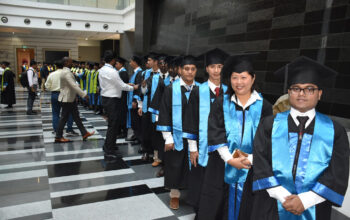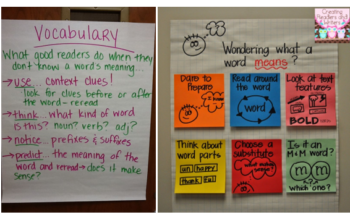
Educational systems worldwide face common challenges: preparing students for rapidly evolving societies, addressing persistent inequality, integrating technological advances, and developing sustainable models for lifelong learning. Yet the approaches to these challenges vary dramatically across cultural, economic, and political contexts. Examining diverse global perspectives on education provides valuable insights for teachers and policymakers seeking innovative solutions to seemingly intractable problems.
Finland’s educational transformation offers perhaps the most frequently cited example of successful system-wide reform. Finnish schools emphasize equity through comprehensive support systems, teacher autonomy through high-quality preparation, and student well-being through balanced schedules including substantial unstructured play. Most striking to international observers is the absence of standardized testing until the end of secondary education—a stark contrast to test-driven accountability systems prevalent elsewhere. The Finnish approach demonstrates that high achievement can result from trusting professional judgment rather than external measurement pressures.
Singapore represents a different path to educational excellence, historically emphasizing rigorous content mastery, competitive assessment, and strategic human capital development aligned with economic needs. However, recent reforms under the “Teach Less, Learn More” initiative have deliberately shifted focus toward creative thinking, character development, and student-centered approaches. This evolution illustrates how a system can leverage its existing strengths in systematic implementation while pivoting toward new priorities demanded by changing economic and social conditions.
Global Perspectives on Educational Innovation
Japan’s educational approach balances academic rigor with whole-child development. The practice of “tokkatsu” (special activities) dedicates substantial curriculum time to student-led classroom management, school events, and collaborative projects that develop social responsibility and leadership skills. Elementary students clean their schools daily, prepare and serve lunch together, and participate in democratic decision-making about classroom policies. These practices reflect cultural values prioritizing community harmony and collective responsibility alongside academic achievement.
Estonia has emerged as an educational technology leader, systematically developing digital infrastructure and computational thinking across its entire system. Programming instruction begins in primary grades, and digital competency is integrated across subject areas rather than isolated in separate computer classes. This comprehensive approach resulted from strategic national investment following independence, positioning digital literacy as essential infrastructure rather than an educational add-on. The Estonian experience demonstrates how systematic implementation can rapidly transform educational approaches when aligned with clear national priorities.
In South Korea, the shadow education system of private tutoring (hagwons) has developed in response to intense competition for university admission. While producing strong academic outcomes on international assessments, this parallel system has created substantial stress for students and financial burden for families. Recent reform efforts aim to reduce excessive competition while maintaining educational quality—highlighting tensions between meritocratic advancement, student well-being, and educational equity that many high-performing systems navigate.
China’s educational reforms reflect its rapid economic transformation and global ambitions. Moving beyond its traditional emphasis on memorization and examination, recent initiatives promote creativity, collaboration, and application through revised curriculum standards and assessment approaches. The “double reduction” policy limiting homework and after-school tutoring represents an attempt to balance academic achievement with student well-being. These changes illustrate how even large, centralized systems can pivot toward new priorities when strategic national interests shift.
Global Perspectives on Reform
Various African nations are pioneering mobile learning solutions that leapfrog traditional infrastructure limitations. In countries where physical schools, textbooks, and trained teachers remain insufficient, mobile technologies provide alternative access pathways. Projects like Kenya’s M-Pesa facilitate financial transactions for educational services, while Rwanda’s One Laptop Per Child implementation demonstrates nationwide technological deployment. These innovations reflect necessity-driven creativity that often emerges from resource constraints rather than abundance.
Indigenous educational models from communities worldwide offer alternative perspectives on learning processes and purposes. These approaches typically emphasize holistic development, intergenerational knowledge transmission, place-based learning, and spiritual connections to natural systems. As environmental sustainability concerns grow globally, these traditional educational philosophies provide valuable counterpoints to industrial-era schooling models—highlighting relationships between educational systems, cultural values, and environmental stewardship.
Brazil’s conditional cash transfer program Bolsa Família links educational participation directly to poverty reduction by providing financial support to low-income families who keep their children in school. This approach recognizes that educational access often faces economic barriers beyond school walls—children may be needed for family labor or lack resources for transportation and materials. By addressing these practical constraints, such programs achieve educational gains while simultaneously reducing poverty, demonstrating the importance of cross-sector approaches to educational improvement.
In India, educational initiatives addressing gender disparities have demonstrated that targeted interventions can shift deep-seated cultural patterns. Programs providing bicycles to girls in rural areas, building separate sanitation facilities, training female teachers from local communities, and conducting family awareness campaigns have substantially increased female educational participation. These multifaceted approaches recognize that educational access intersects with transportation, safety, cultural norms, and role modeling—requiring coordinated interventions beyond simply building schools.
New Zealand’s early childhood curriculum Te Whāriki exemplifies culturally bicultural educational policy, deliberately incorporating both Māori and European educational perspectives. The curriculum is structured around principles of empowerment, holistic development, family involvement, and relationships that reflect Māori values while remaining accessible to all New Zealanders. This thoughtful integration demonstrates how educational systems can acknowledge historical injustices while building shared frameworks that honor multiple cultural traditions.
International schools worldwide serve as laboratories for educational hybridization, blending approaches from different national systems. Programs like the International Baccalaureate combine rigorous academic standards with inquiry-based methodology and global citizenship development. These transnational educational spaces increasingly influence national systems as successful practices cross borders through professional networks, research dissemination, and policy borrowing. The resulting educational hybridization represents a form of globalization that preserves local adaptation while facilitating cross-cultural learning.
Canada’s success integrating immigrant students represents another noteworthy achievement, with newcomer students often outperforming native-born peers within one generation. This success stems from comprehensive support systems including language instruction, cultural orientation, family engagement, and celebration of diverse cultural identities as national assets. The Canadian approach demonstrates that educational systems can transform demographic diversity from a perceived challenge into a genuine strength through deliberate inclusive practices.
Conclusion
As global educational challenges intensify—from climate change education to artificial intelligence integration—cross-national learning becomes increasingly valuable. No single country has solved all educational challenges, but each offers unique insights based on cultural values, historical contexts, and innovative approaches. The most promising educational futures will likely emerge not from wholesale adoption of any single national model but from thoughtful adaptation of diverse approaches to local contexts—a process requiring both global perspective and cultural sensitivity in equal measure.
please follow us on Vibe Linker.


